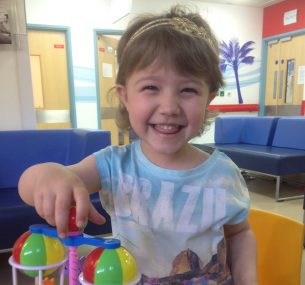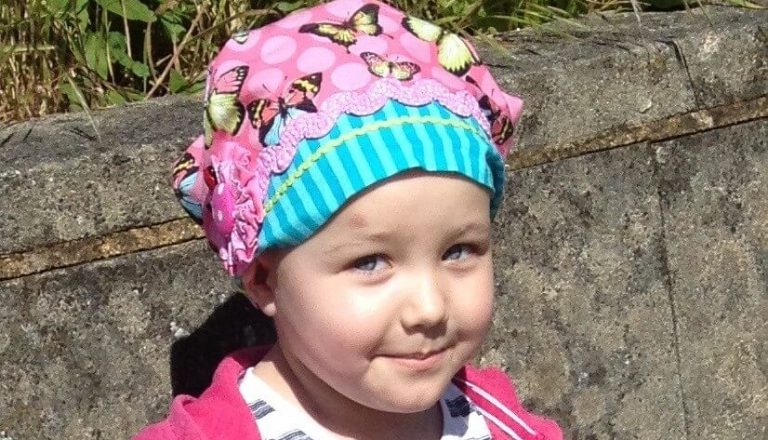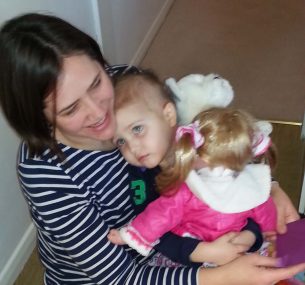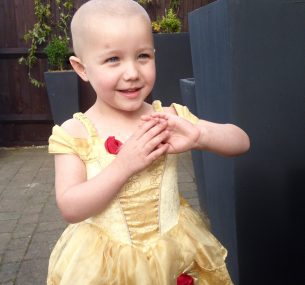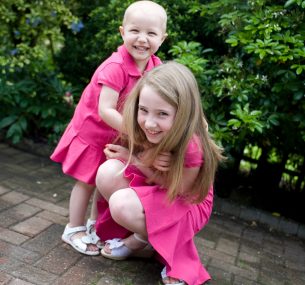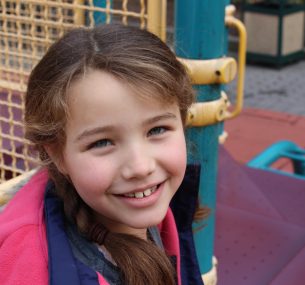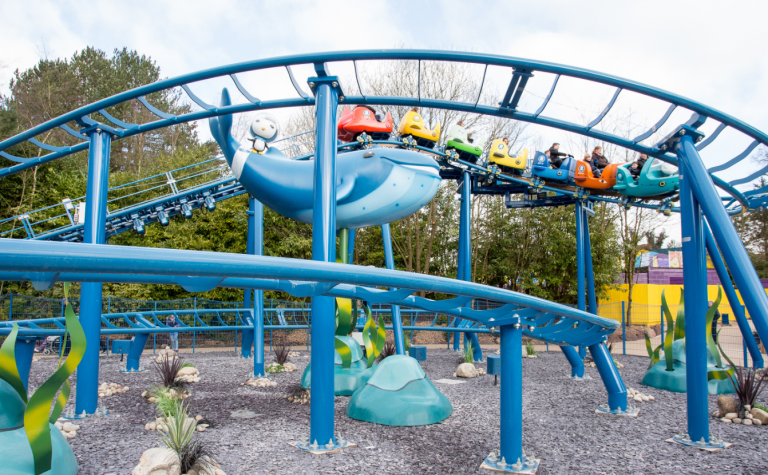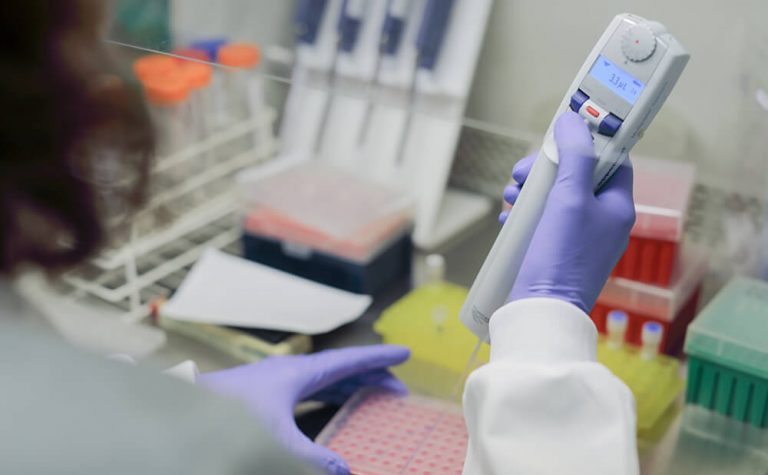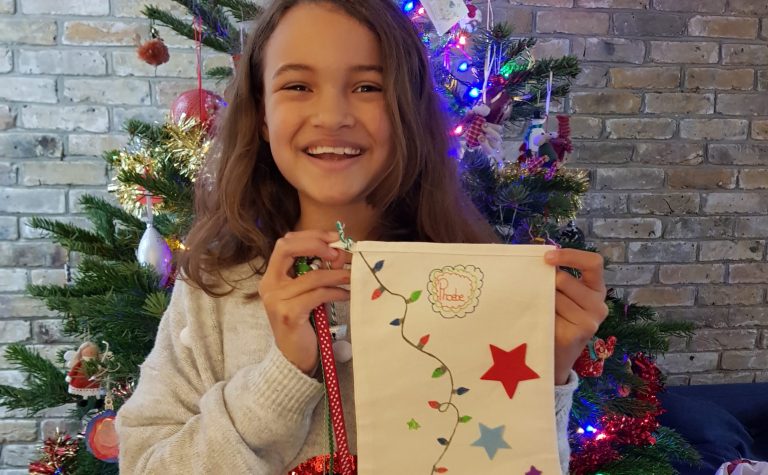Shocking news
It was a massive shock the day we were given Tilly’s diagnosis. Tilly was two years old and it was Friday morning. It was her big sister Mollie’s ninth birthday and we had a lovely half hour opening presents before dropping Mollie to school. Tilly had been a little unwell but I thought it was caused by a UTI or viral infection. I took her to the doctors expecting antibiotics and whilst I was there, I mentioned to the GP that she seemed particularly pale and she thought it was worth investigating and sent us to A&E for a blood test. We arrived at around 11.30am and they had a quick look on arrival but did not seem unduly concerned. It was around 5.30pm before they took the blood sample and then they took the four of us to a room to wait for the results. At just after 10pm they came in to give us the devastating news.
When I heard the word leukaemia the only thing I could think of was that my baby had cancer. I couldn’t breathe. The doctor quickly got a nurse to sit and watch a movie with the girls and we were taken into a different room so we could sit and talk, ask questions and cry.
Neither my husband, Thain, nor I, slept at all that night. Mollie spent the night, her birthday, curled up on the bed next to Tilly.
The following day, my husband took Mollie home to make arrangements and pack and I stayed with Tilly. They had to start flushing her system immediately and then on the Sunday we were blue lighted in an ambulance to hospital which would be our home for the next two weeks.
